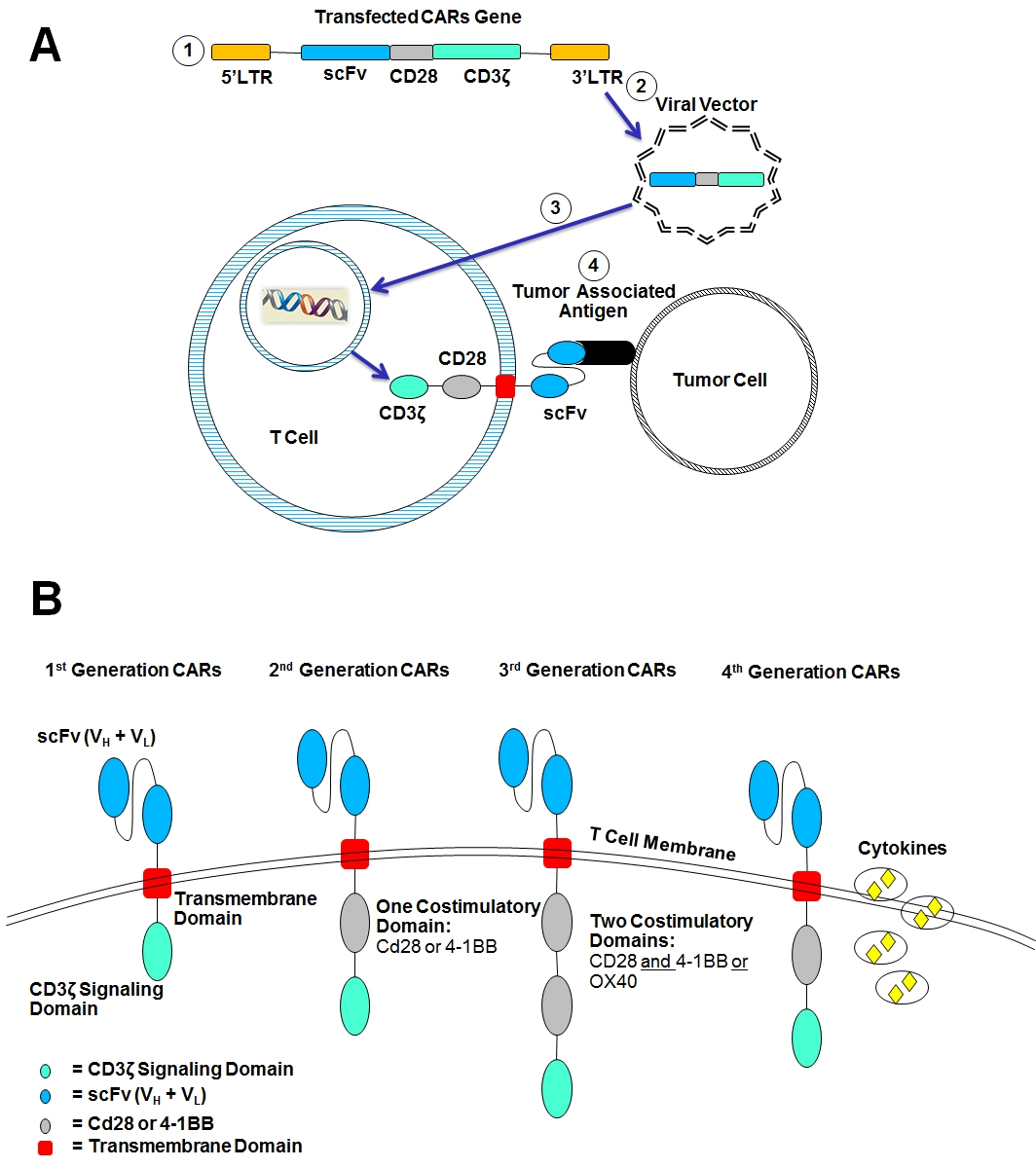
Figure 2.
The Chimeric Antigen Receptor (CAR).
A: Construction and function of the CAR. ⓵ Constructed gene contains the tumor-associated antigen binding site (scFv), a co-stimulatory region (e.g. CD28), and an activating signal region (CD3ζ). ⓶ The gene is transfected into the T cell using a viral vector. ⓷ CAR gene incorporates into the cell DNA and translates into CAR protein. ⓸ CAR binds to the tumor-associated antigen (TAA), and the T cell is activated to cause tumor cell lysis, to secrete cytokines, and to proliferate.
B: CARs transfected gene encodes to an extra-membrane TAA binding domain (scFv), a transmembrane domain and endomembrane cell activating domain (CD3ζ). First-generation CARs contain one signaling domain, the cytoplasmic signaling domain of the CD3 TCRζ chain. Second-generation CARs contain the activating domain and a co-stimulatory domain, typically the cytoplasmic signaling domains of the co-stimulatory receptors CD28 and 4-1BB or OX40. Third-generation CARs harness the signaling potential of two co-stimulatory domains: CD28 domain followed by either the 4-1BB or OX40. Fourth-generation CARs may be further enhanced through the introduction of additional genes, including those encoding proproliferative cytokines (e.g. IL-12).